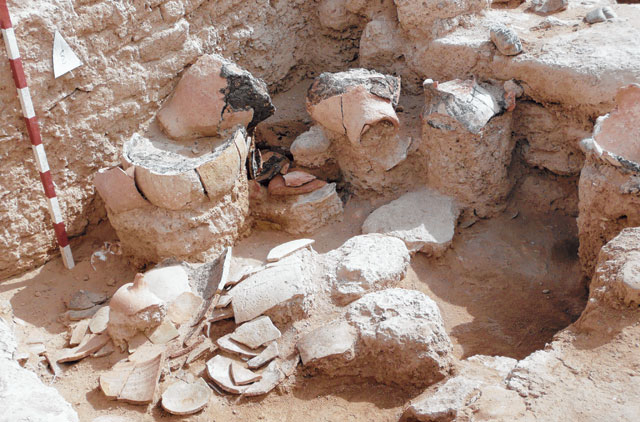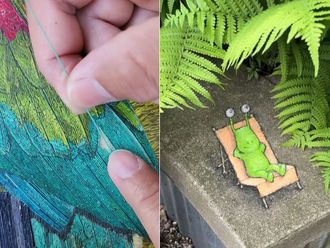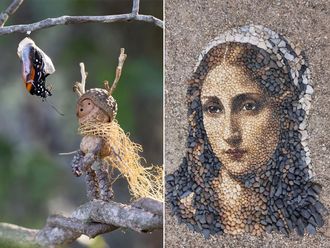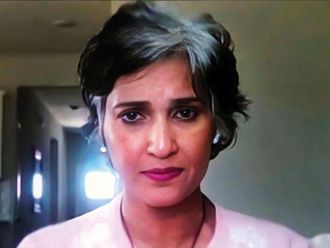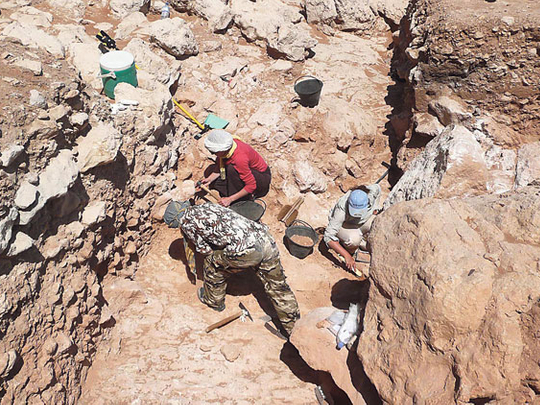
Sharjah: International teams are digging in the dust to gain an insight into Sharjah's past and unearth treasures from time gone by.
Archaeological teams from the US, Belgium, Germany, Spain and Japan arrived last December and are expected to be in the emirate for another couple of months.
"Each team is digging up on areas of their specific interests, in areas that cover the Paleolithic Age, as well as the Bronze and Iron Age," said Dr Sabah Jasem, Director of Archaeological Excavations at Directorate of Antiquities in Sharjah.
The Japanese team from Kanazawa University is currently focused on Islamic sites in Dibba Al Hosn. Its previous findings include pottery pieces, glass vessels and jewellery from Iran, China and Yemen.
"With the collaboration of a local-based team that is working all year round, we have found skeletal remains, tombs and houses in Maleha, Madam and Faya," said Dr Jasem, pointing out that the recent findings date back from 3BC to AD 3.
Maleha
"Maleha is a very large site and even though we have been excavating there for 20 years now, we will continue to do so for many more years to come.
"The most important discovery was a monument in Maleha dating back to 3000BC that was carved out of stone into a circular shape, known as Umm an-Nar."
Such monuments are referred to by that name because the first of its kind was discovered in Abu Dhabi in the 1950s in an area called Umm an-Nar.
The US team from Bryn Mawr College will work on the Muweilah site where past findings include a prehistoric Arabian settlement in the area of Tell Abraq, near Umm Al Quwain, which witnessed a 2,000 year settlement from 3BC to 1BC.
Dr Jasem stressed the American team is focusing on clarifying the chronology and extent of a massive stone and mudbrick wall revealed last year. The wall, which was nearly four metres in width and preserved to several metres in height, appears to have been built some time around 1000BC.
"The key to understanding the history of the settlement, and more broadly the entire late second and early first millennium BC throughout the UAE, is the thorny issue of the domestication of the dromedary camel," he said.
Large settlement
Meanwhile, the Spanish team from Madrid University arrived in Sharjah recently at the site at Thuqueibah, which features a large settlement with houses, workshops and an underground water system that was built during the Iron Age.
Germany's Tubingen Archaeological Project, which is run by the University of Tubingen, has collaborated with a local team to work at Jebel Faya where Paleolithic tools and flint were found dating back 45,000 years.
"This is the first discovery of its kind in the country that led us to believe that [the tools] were left by people who travelled from Africa at that time and who crossed into South East Arabia, while they were stationed here," Dr Jasem said.
The site of Wadi Helou, which is also excavated by the German team, is another area of importance as findings dating from the Bronze Age suggest a mining industry where raw copper was extracted from the nearby mountains. A large ingot of copper weighing five kilograms is among the findings.



